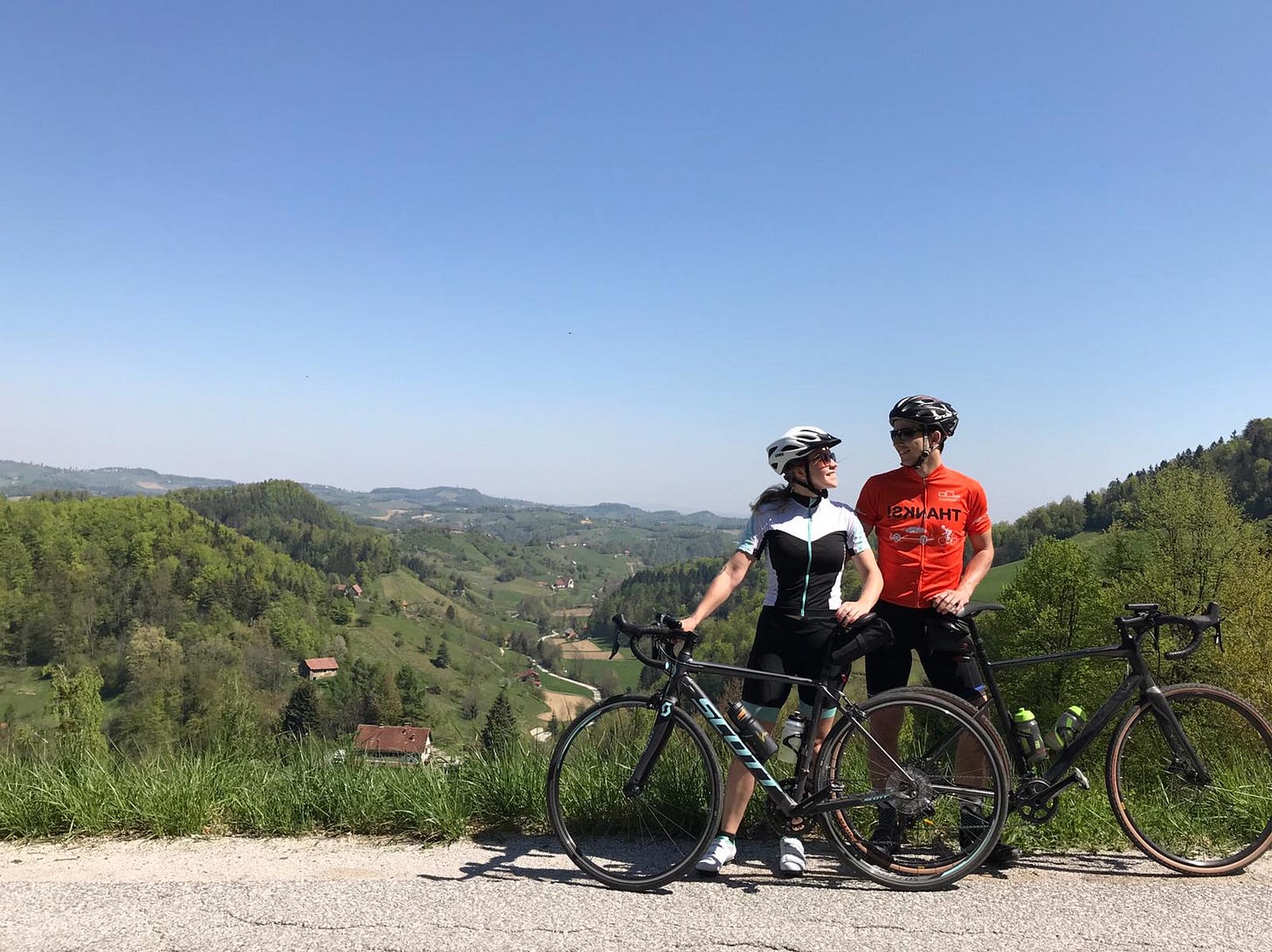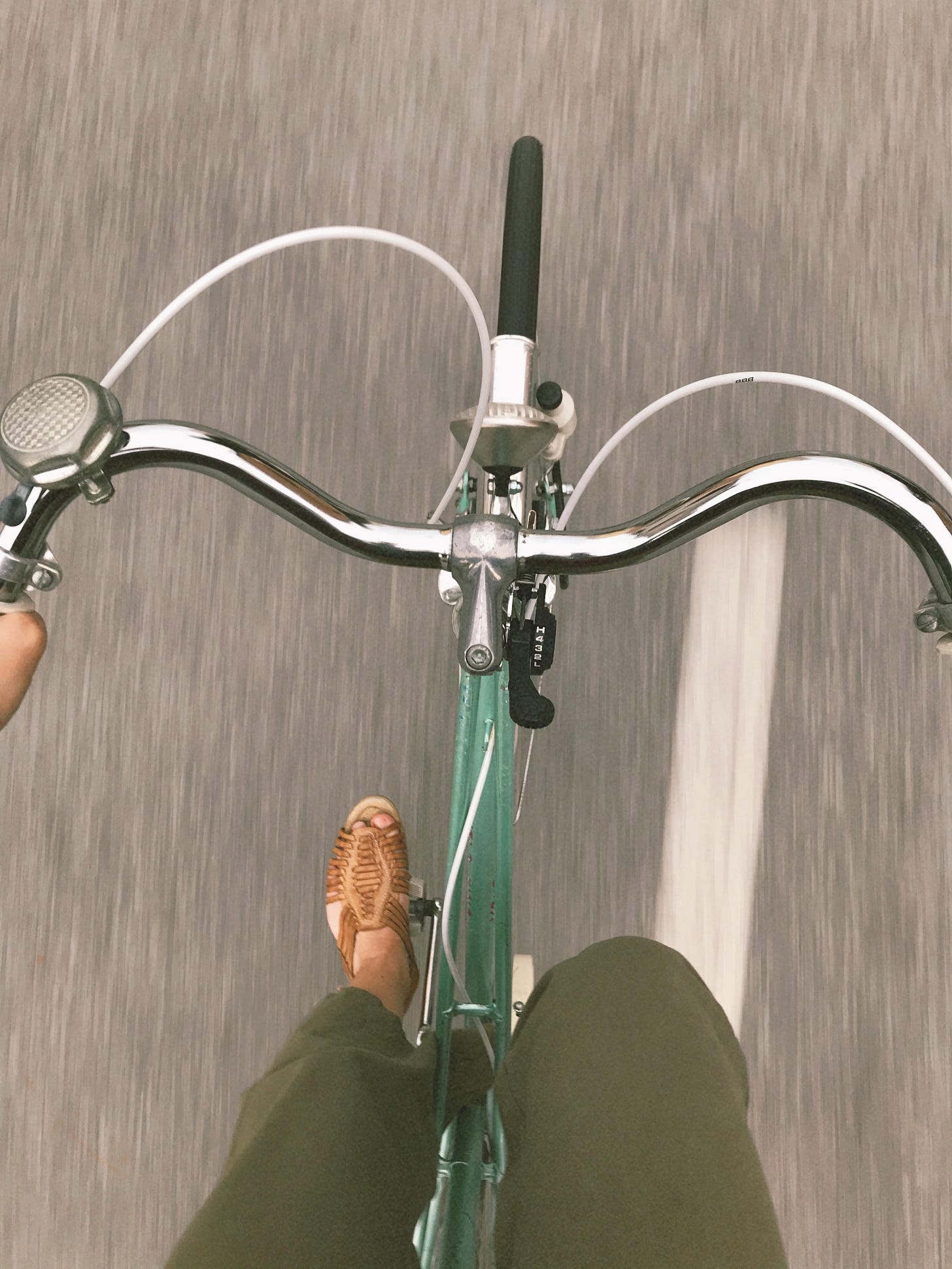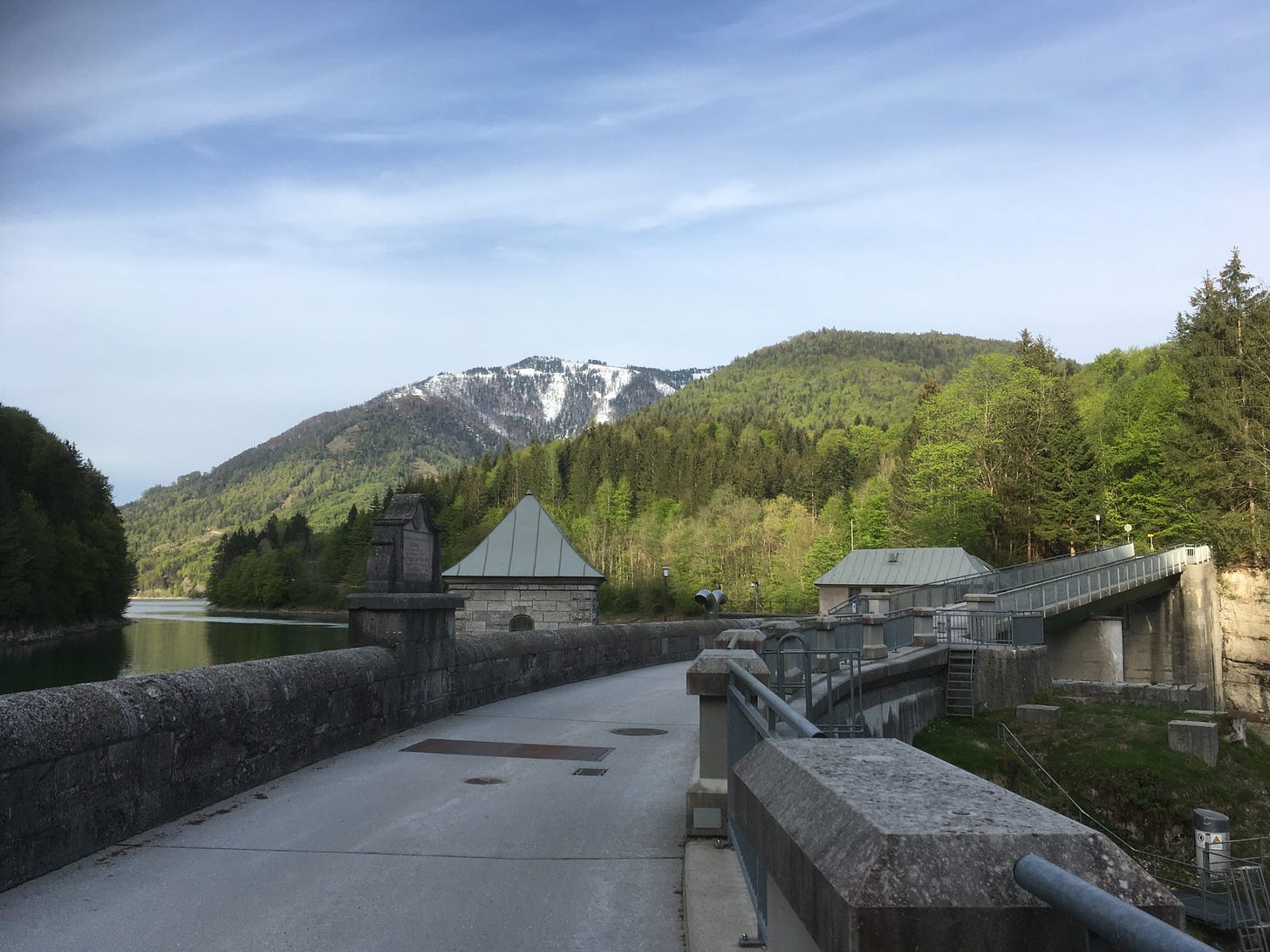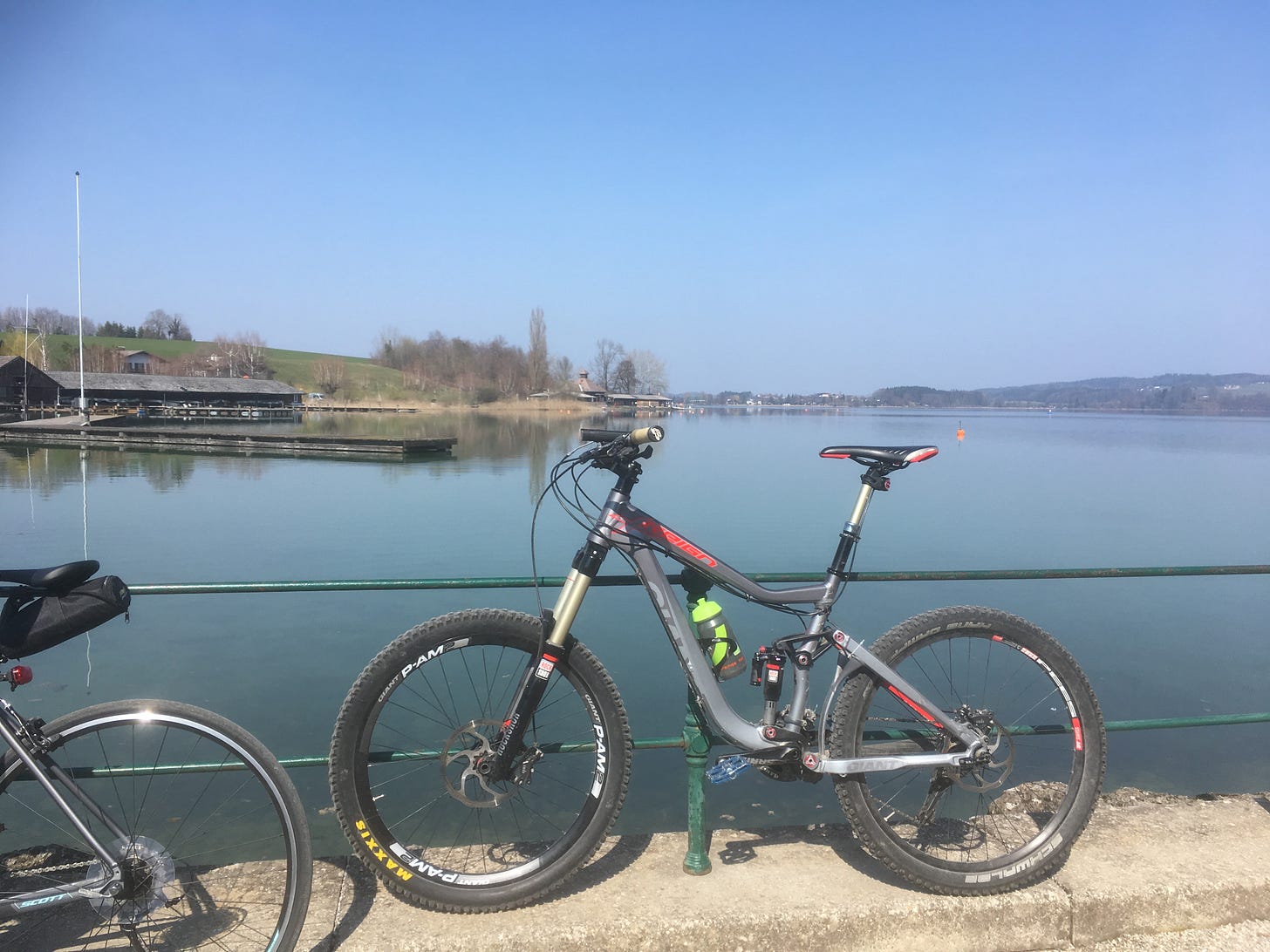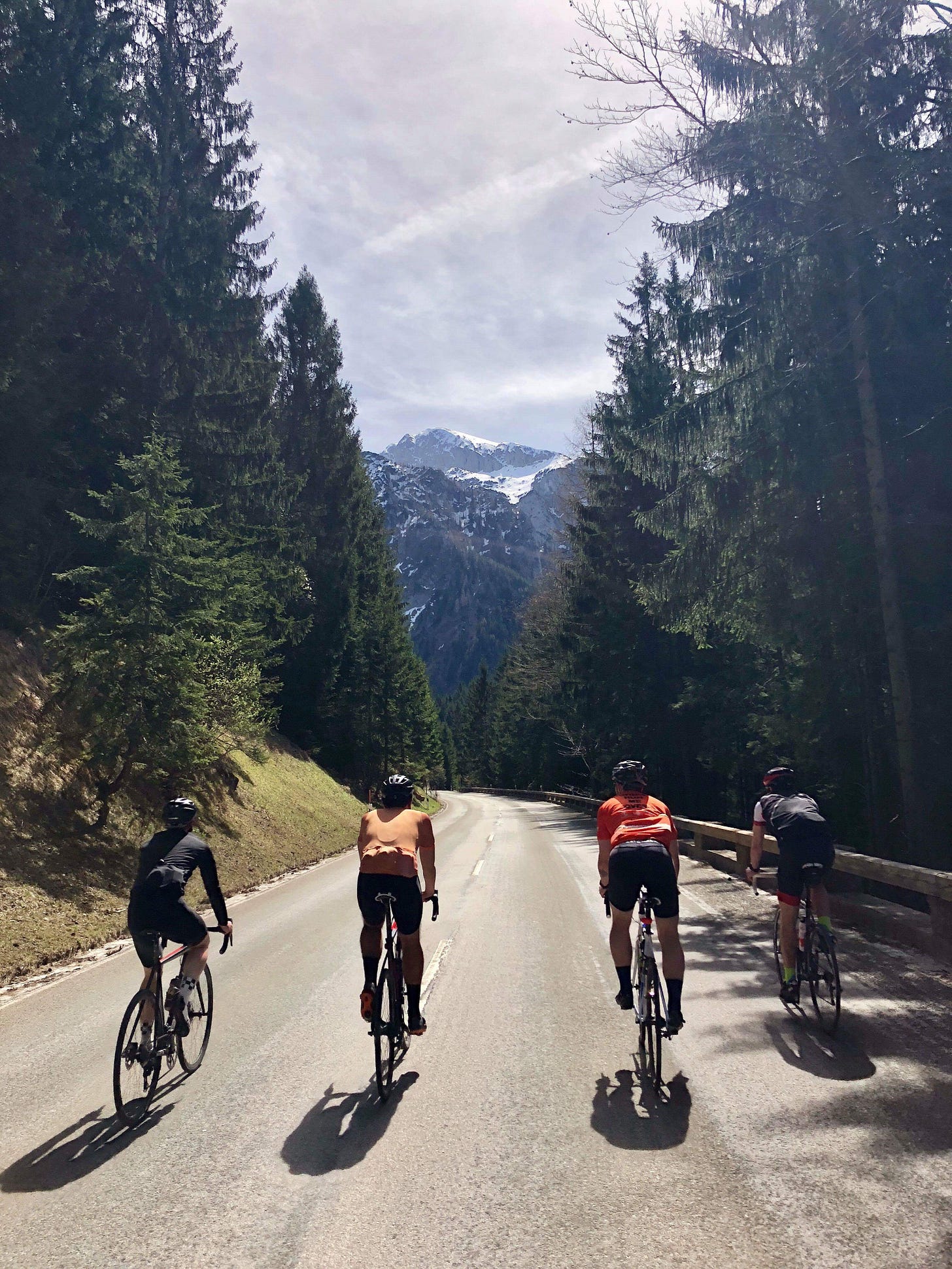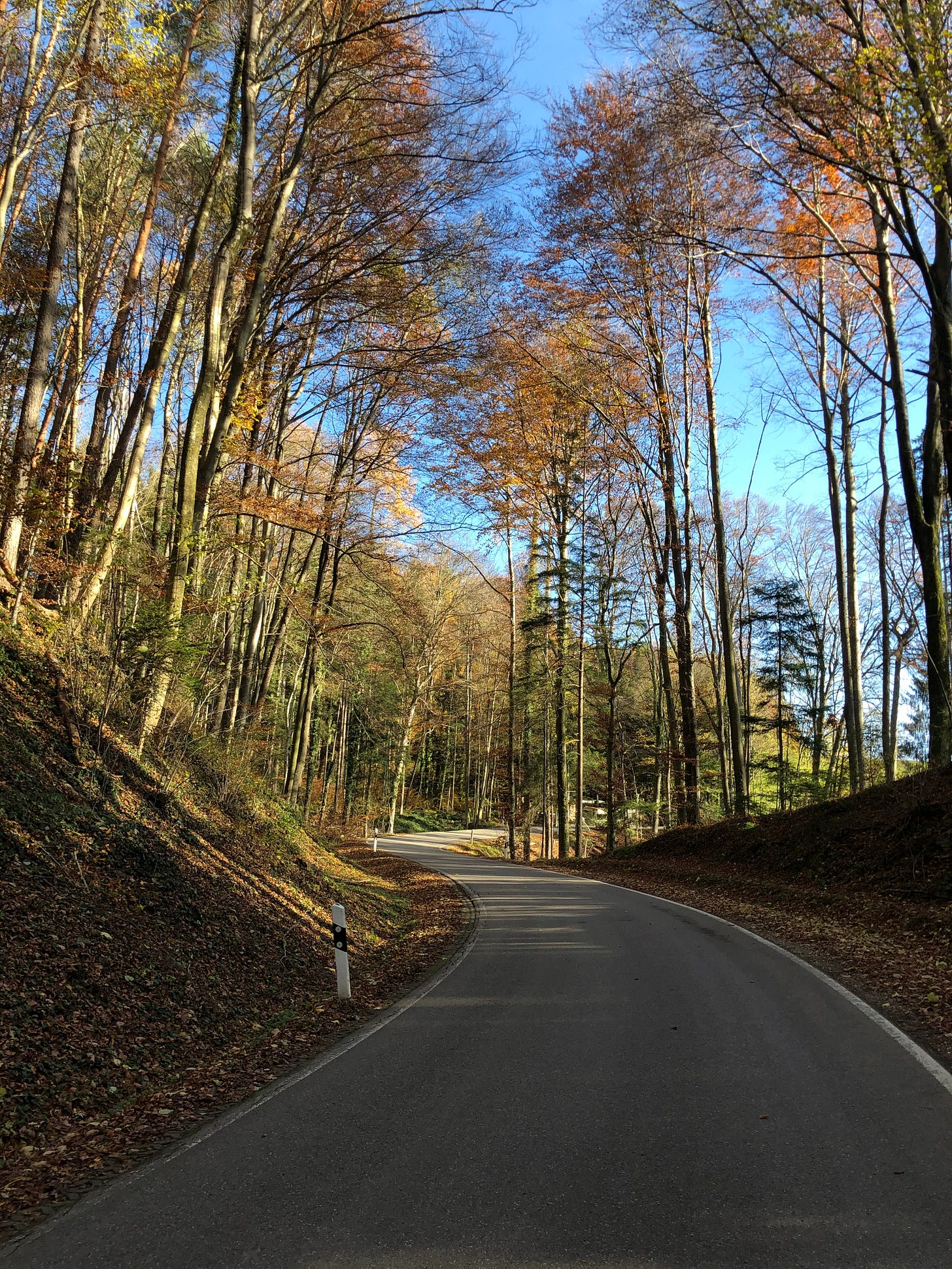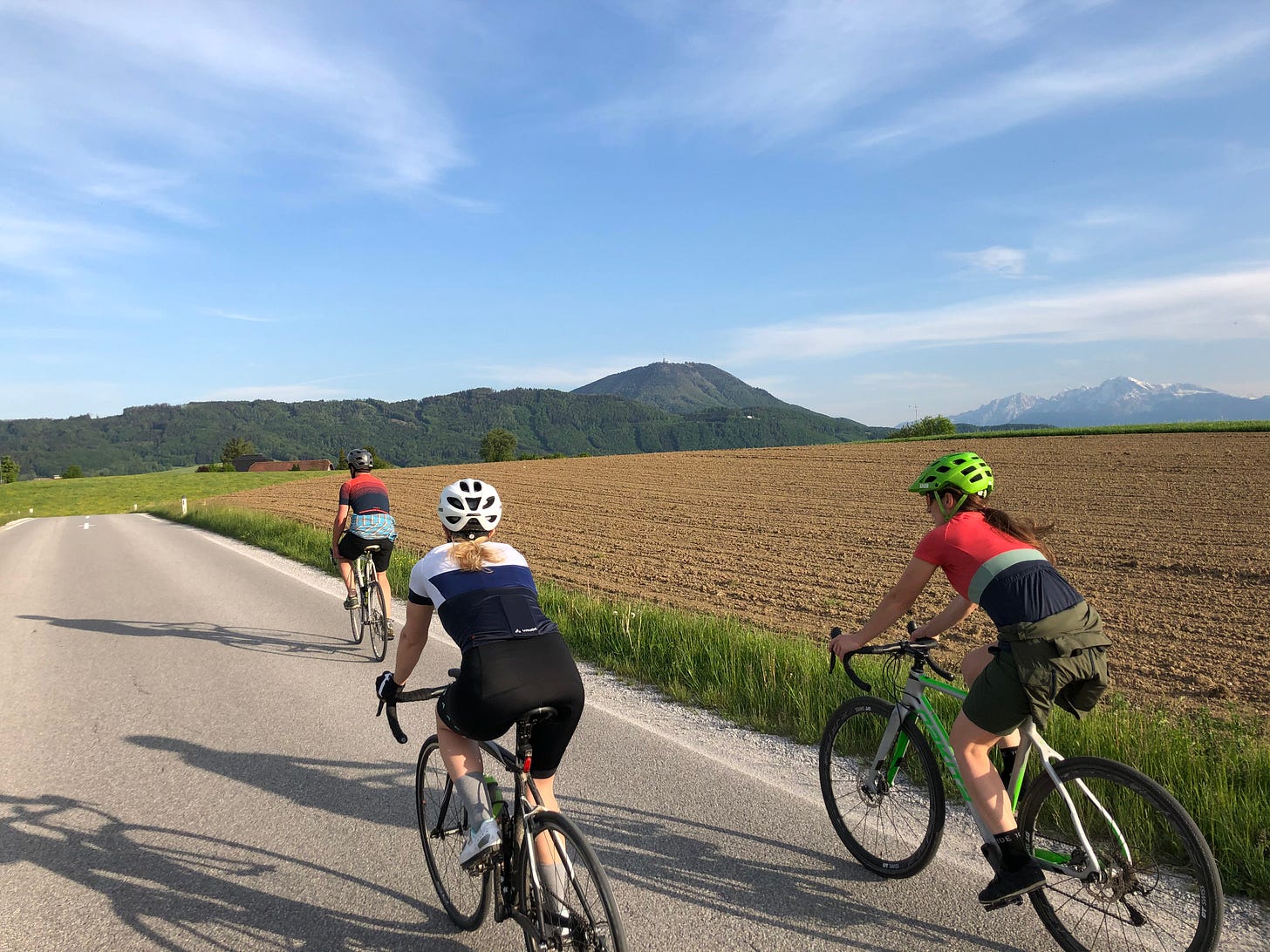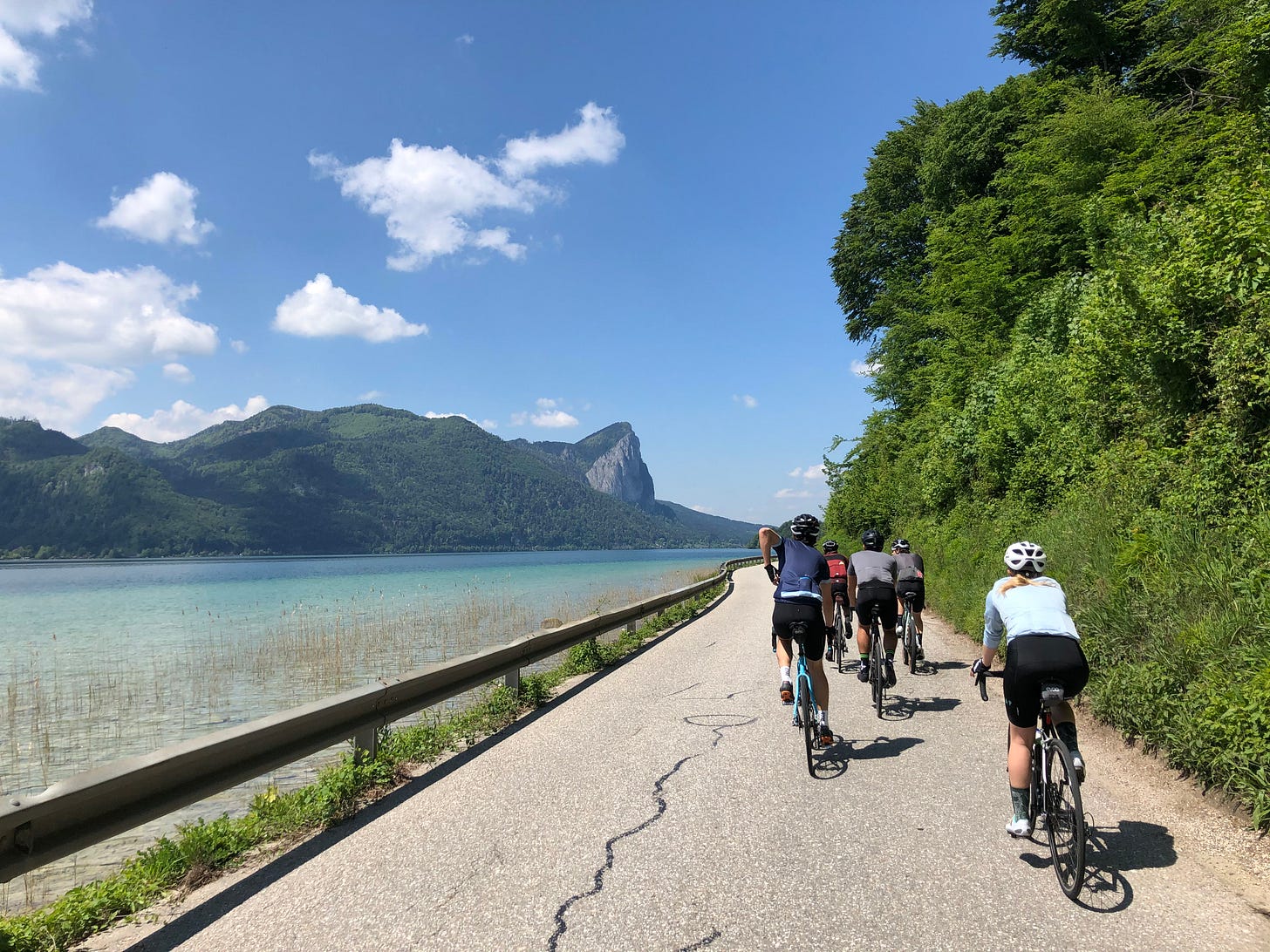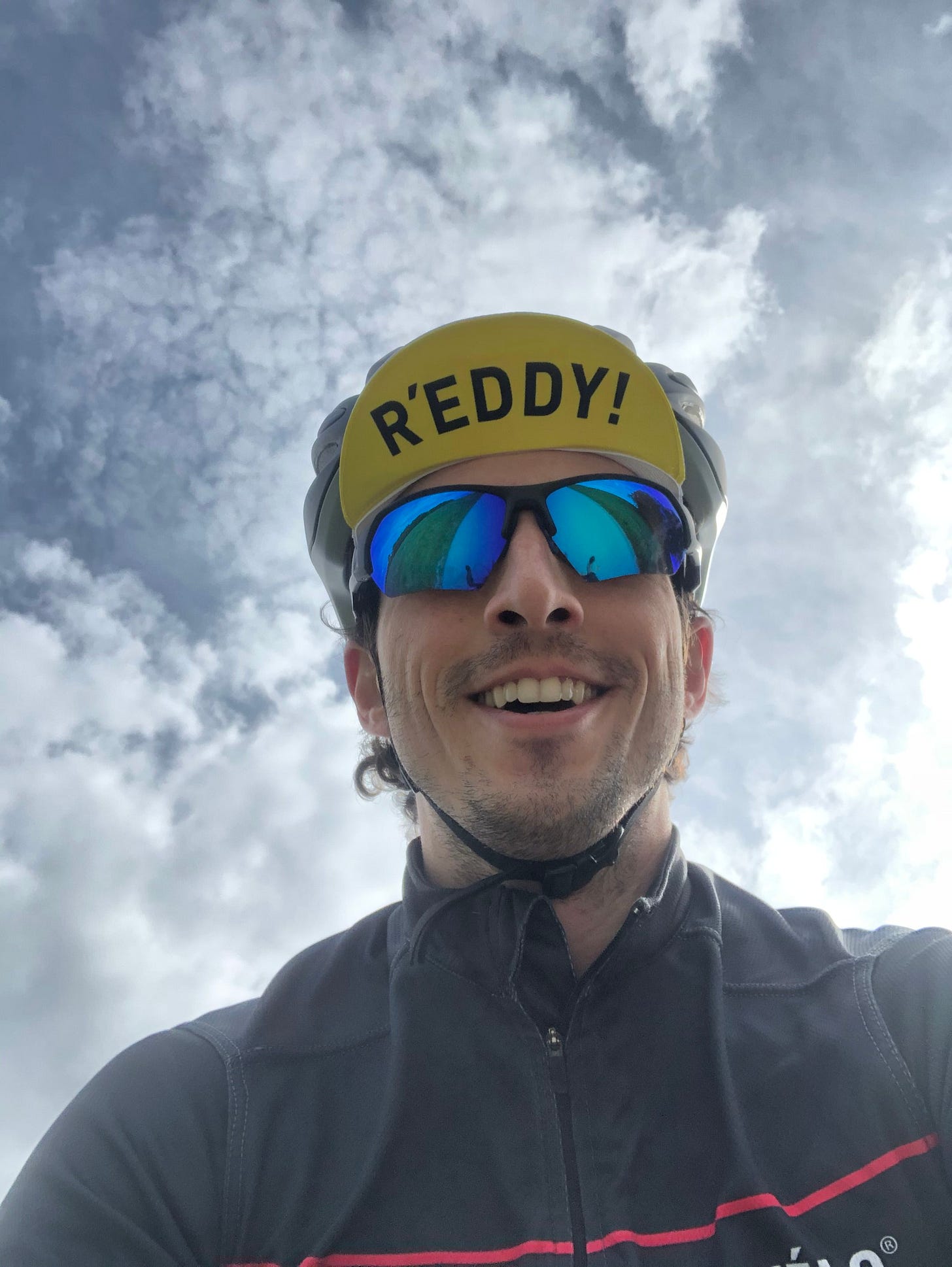The Distance Ladder: Reaching Your First Century
A practical guide for achieving longer and longer rides.
In my very first post for this newsletter, I wrote a little about how my own definition of a “long ride” changed over the years. When I started riding, 20 to 30 miles felt like it took everything I had. Now, I measure a long ride hundreds of kilometers and numbers of consecutive days.
Except that this only tells a small part of the story, and in a pretty misleading way.
Going as far as I do now took me years of riding, of gradually stretching what a “long ride” meant to me, before I came to this point. There was a long list of intermediate milestones which felt positively monumental to me at the time. Each of those milestones are important, significant, and worth celebrating.
Just about any experienced cyclist you talk to will be able to tell you about the very first time they rode a milestone distance. I’ve been on dozens, probably close to 100 different 100km rides over the last seven years, but I can still remember many details about my very first time going that far.

Every cyclist starts from the same place.
So regardless of what you might consider a “long ride” right now, this post is intended as both encouragement and practical advice for what to target next and how to achieve that goal. Call it climbing the distance ladder.
Today, we’re going to be covering the first four rungs, up to the Imperial Century.
First Rung: 10km (6mi)
Second rung: 30km (18mi)
Third Rung: Metric Century (100km/60mi)
Fourth Rung: Imperial Century (160km/100mi)
(This is assuming road or light gravel surfaces. If you’re a mountain biker or spending a significant amount of time off road, you can adjust the distances here down by 30% on average, depending on how technical the route, and still have a pretty solid set of targets.)
In the next couple newsletters, I’ll be looking at more rungs on the distance ladder from two separate angles: Longer one-shot rides, and longer total distance over multiple days.
Are these distances arbitrary? A little. But I think they’re effective goals because they each represent an aspiration. Have you not been on a bike in 10 years? Pedaling as far as 10km is a significant achievement, and as you start to get comfortable with that distance (or even a little further), 30km represents a goal that feels like a different experience.
That’s why I like the ladder metaphor. It takes a solid footing on whatever rung you’re currently on to be able to reach for the next one. And once you’re there, there’s a sense of having arrived.
By the way, every person will have unique concerns or questions, so if I haven’t answered your question about how to reach your next milestone here, ask your question in the comments! I’ll answer every question posted there, and I’d love to connect with you directly.
So: let’s start climbing the distance ladder.
First Rung: 10km (6mi)
Every new cyclist starts here, even the experienced athletes, because riding a bike requires unique things from your body. But bikes are also magic. They will let you see where you live from an entirely new perspective. They’re supposed to be fun. Nowhere is that more true than here, where the goal isn’t much loftier than “get out on your bike!¨
Pay (almost) zero attention to your equipment.
You do not need a fancy bike. You do not need fancy clothes. You need whatever you have available to you.
The simple truth is that you will not be going far enough or fast enough for your equipment to play a significant role in whether or not you can do this ride.
That said, here are the few things that you do want to pay attention to:
Do you have a helmet?
Don’t ride without a helmet. This has very little to do with your abilities and is much more about all the people, cars, and other cyclists around you. Helmets protect you from the unexpected and unpredictable far more than from your own evaluation of your skills.Are your tires pumped up and holding air?
If not, take your bike to your local bike shop. Chances are you just need new tubes (the balloon-like thing that goes inside your tire and actually holds the air). They’ll cost about $5, plus a little for the shop’s labor. You can also change the tubes easily yourself, but that will require a couple more (fairly cheap) tools, and the shop can help check to make sure there isn’t something stuck in the tire that’s the root cause of the flat.Is your seat around the right height?
A saddle (or seat, the words are interchangeable) that’s too high or too low is probably the single biggest cause for discomfort on the bike. A good rule of thumb is to prop the bike up against a wall (for balance) and sit squarely on your seat with no shoes on. If at the very bottom of the pedal stroke your leg is fully extended with your heel on the pedal, it’ll probably be close to right once you have shoes on and have your pedal under the ball of your foot.Are the brakes functional?
If you can’t stop, you’re going to have a bad time. While standing beside the bike, lift one wheel and spin it by hand, then try the brake. Does the wheel stop? How about the other one? Next check: In your driveway or a parking lot, ride slowly and try each brake separately. (Be extra careful testing the front brake.) If they stop you within a reasonable distance, you’re good to go.
You’ll notice I didn’t say anything about gears or gear shifting. That’s not because gears are bad or shifting is irrelevant, but as long as the bike isn’t stuck in just a horrifically heavy gear, you’ll probably be ok at first. My very first road bike was actually my dad’s old bike that had barely been ridden in years. Only about two and a half of the seven gears on the bike actually worked. But those two and a half gears got me through many 10-15km rides.
Oh, and bring a little water.
Follow the low-traffic road.
One of the biggest hang ups for new cyclists is often finding roads that feel safe to ride on. If you’re lucky, your area might have a good network of bike paths, or some low-traffic, low-speed residential roads. But even if it doesn’t, finding roads to ride can often lead to discovering new ways through your city or town you never knew about before!
As much as possible, keep things simple here. No need for a complex route. Heck, no need to stick to an exact route. Instead, look for a place to explore. Maybe that’s following a back road past where you normally would turn off of it. Maybe that’s seeing how far the local trail network will actually carry you.
This may be a bit counter-intuitive, but slower two-lane roads are usually preferable to multi-lane roads. Having only one lane in your direction of travel sort of forces cars to see you, and it usually causes drivers to be more cautious in passing since they have to step out towards oncoming traffic to go around you. Multi-lane roads tend to have more cars and higher speed limits, and in my experience cars are a lot more likely to crowd you in order to pass when a lane next to them is zipping by.
Ride safely, but ride with confidence. Take the full lane of the road when you need to, get onto bike lanes and paths as much as possible.
As you start riding this distance (or even a little further) more often, you’ll start to feel stronger, and you might start casting an eye towards longer distances.
Second Rung: 30km (18 miles)
At this distance, you really get to start exploring. One of the things that I love about bikes (as opposed to, say, running) is that you feel like you’re going places. A 30km loop is likely to circle most of the area where you live your day-do-day life. You get to learn your environment better, seeing how all the back roads connect to one another.
Is it time to buy a bike?
Let’s not beat around the bush: there is a significant performance difference between an entry-level road bike and a city cruiser. But does that mean you need to go buy a road bike?
No.
Maybe.
Let’s qualify that. No, you don’t need to go buy a bike just for the sake of buying something new, but you do need to pay a little bit more attention to the quality of your equipment. There are a wide range of bikes that will comfortably and efficiently carry you on a 30km ride. A road bike. A hybrid bike. A mountain bike, even one with a LOT of suspension.
If your bike works well, it’s good enough to take you this far. But those little problems - creaks and bad shifters and worn tires and more - will be significantly magnified when getting up to a 30km ride.
You still don’t need to go buy a super expensive road bike - and you probably shouldn’t, in part because a lot of bikes are made for racing and won’t be comfortable for a new-ish cyclist. But you can get a lot of bike for $1000, and that’s before considering secondhand options.
The thing you should definitely buy, though, is a flat kit. You don’t want to have to call someone to pick you up just because you had a tire go flat. I’ve been there. It’s embarrassing.
The most basic version of a flat kit is a spare tube, a multitool, a tire lever, and a hand pump. All this will strap to your bike very easily with a pretty cheap bag.
While it might be intimidating at first, fixing a flat tire is actually pretty easy. There are plenty of videos online to walk you through changing a tube, and many local bike shops will host classes for basic maintenance like this. Learn how to do it, and maybe practice once or twice at home so you aren’t doing it for the first time when stressed on the side of a road.
Drop a pin on the map.
Because you can start getting to new and interesting places, it’s time to go exploring!
A couple examples from when I was riding at this rung of the distance ladder. (Which, I’ll remind you, was for several years.)
I rode from the Dallas suburb where my parents lived over to Fort Worth. In the process, I discovered a bunch of beautiful back roads I’d never really seen despite living there my entire childhood, plus bike trails along the Trinity River.
Right after I moved to Los Angeles, I climbed up to the twisty road that ran along the ridgeline of the Hollywood Hills. I followed that until I was ready to turn around, and found some hiking trails, back ways to a number of nearby neighborhoods, and some stunning views.
I’m not saying to go in blind. That’s a recipe for ending up on roads you do not want to ride a bike on. But I am saying to pick a destination that seems interesting or sparks your curiosity and then figure out a way to get there. Google Maps is a good start, especially with the satellite view. Dedicated cycling resources like Strava heat maps, RideWithGPS, or Komoot can also be helpful. Don’t be afraid of going the long way around. The destination is the excuse for the journey, not the end unto itself.
Your phone can be very helpful keeping you on your route, but writing yourself directions on an index card and taping it to your stem can be surprisingly effective. Stopping every few minutes to pull out your phone can ruin a good time, so look for ways to minimize your turns while also getting yourself off the beaten (and car-heavy) path.
Rinse and reapeat.
Riding 30km semi-regularly is probably going to make you feel one of two ways. Either…
“This is fun. I like doing this every now and then. I can get myself out to [insert destination] without my car. I am content.”
“GIVE ME MOOOOOOOORE!!!!”
Sometimes it’ll even start with the first one, then shift to the second.
At any rate, if you’re at this rung and loving it, keep riding! Go north instead of south. Stretch 30km to 40km. Start commuting by bike.
Before you know it, you might find yourself trying to climb…
Third Rung: Metric Century (100km, 60mi)
Reaching this rung of the distance is a big deal. Even for many very serious cyclists, this is considered a “long ride.” Speaking from personal experience, I spent several years using “about 100k” as the barometer for whether or not I could realistically expect to achieve a route. Anything longer was going to require some special planning.
So how do you get here? Well…
You need to ride regularly, you don’t have to be “training.”
I mentioned bike commuting a moment ago, and that’s still one of the easiest ways to make sure you’re regularly on your bike. When time in the saddle is build into your daily routine, your body gets used to being on the bike a lot. That’s very important when starting to tackle real long distances.
It’s also true that you probably aren’t going to be jumping to 100km a week or two after doing 30km for the first time. 30km may be a milestone prior to this, but getting comfortable at that distance and more (riding 40, 50, 60km routinely) is important before making the jump up to 100.
You don’t need to hire a coach or follow a strict training plan. I mean, you can if you want to. But this is still firmly in the realm of, “Get out and ride your bike more,” in order to get ready for a 100km ride.
Equipment matters more, and there are more things to think about.
1) The Bike
I almost wrote, “We’re still technically in the realm of riding whatever well-maintained bike you have,” but I’m not sure that’s helpful. It’s technically true - there are mountain bike races that last for 100km or even 1000km - but the people who ride those aren’t trying to ride 100km for the first time ever.
So instead I’ll say this: if you have a mountain bike you love, especially a cross-country style bike, and the riding you’ve been doing to this point has been mostly offroad, then go for it. It will probably take you longer to work all the way up to 100km, but don’t let that (or anything else) stop you from having fun on your bike.
However, if your goal is to go further and further on the road, it’s probably time to buy a road bike. It still doesn’t need to be an expensive one. While there are undoubtedly performance and comfort benefits that come from spending more on your bike, saddle, shoes, and other gear, the returns from a $1000 bike, to a $2000 bike, to a $5000 bike are diminishing. Mostly you’re paying for weight reductions. How much your bike weighs is consequential, but it’s not the be-all-end-all. Lots and lots of long distance cyclists choose to ride steel bikes even though they’re (generally) heavier than fancier materials like carbon fiber or titanium (or even aluminum). This isn’t the place to go in-depth on bike selection (maybe a future newsletter?), but a road bike or gravel bike is a good idea. And especially if you live in a hilly or mountainous area, a bike with an easiest gear in a 1:1 ratio or easier (meaning that the smallest front ring is as small or smaller than the largest back cog) is just about a must have.
2) Navigation
Aside from the bike and its immediate accouterments (bottles, flat kit, helmet, etc.), it’s time to think about navigation. I’m not going to pretend that no one’s ever navigated by cue sheet before, but having turn-by-turn GPS directions for a route you’ve mapped in advance, especially over this kind of distance, is very nice to have.
That doesn’t mean you have to shell out $200+ on a bike computer, although once again, a bike computer is nice to have. A much as anything else, it’s a way to make sure you don’t burn through your phone’s battery and end up lost or stuck somewhere with no way to contact help. My current recommendation is a Wahoo Element Bolt because the device is simple, reliable, and among the most affordable high-function computers on the market. Other options: Garmin is the biggest name in the market, but their computers seem to be either packed with more functions than you really need (and therefore expensive) or slightly underfeatured (especially for navigation). I’m also keeping an eye on the Coros Dura, which has a lot of promise but seems like it’s not yet fully baked.
If all of that is overwhelming, though, just use your phone. There are plenty of cheap bike-mounting cases out there, but for only a little bit more money you can get something a lot more secure. I’ve used Quad Lock for years (including for years navigating with my phone and not a bike computer) and still use it as a backup to my Wahoo.
However, Google or Apple Maps is probably not the best answer for the actual navigation part of the puzzle because they WILL drain your battery. What you want is navigation that works from your phone’s GPS connection, not its cell network signal.
My go-to here used to be Komoot, and it’s still a great option. But it’s not the clear leader anymore because while you used to be able to buy global offline maps for a one-time cost, they just switched to a subscription model a couple weeks ago. That means it’s basically a toss-up between Komoot and RideWithGPS. Both services are $60 per year. Both will allow you to create your own routes and download them for offline use (i.e. will still work turn-by-turn with your phone on Airplane Mode), and both have an assortment of tools that allow you to discover routes in your area. I have less direct experience with RideWithGPS, but either service will fit your need here.
Route and nutrition can go hand-in-hand to reach this rung of the distance ladder.
I love cycling because of the adventure. That’s probably clear not only from when I’ve said that explicitly in the past, but from the advice I’ve given here about exploring your surroundings.
For your first 100km ride, I’m going to make a very specific sort of destination recommendation: go somewhere you can sit down and have some food. This can be a restaurant. A grocery store. A food truck that stakes out a spot at the local park every Saturday. Anywhere that’s at or just beyond your halfway point.
Cycling is different from other sports you might have played in the past because it lasts for hours. A long run might take an hour at most. A soccer game might run two hours. Riding your first 100km ride is probably going to take anywhere from four to seven hours.
That means you WILL need to eat something, but especially when you’re not used to it, remembering to eat while riding (or eating enough while riding) can be really difficult. You can and should bring some snacks to eat along the way; don’t be shy about taking a five minute break every hour to have a quick snack. Even if you don’t feel hungry, eat. It will keep you going later in the ride when your legs are tired. You don’t want an empty stomach compounding the tired and sore feeling in the rest of your body.
And this brings us back to making a route to a food stop at or around your halfway point. Even if you’ve forgotten to eat along the way, this will give you an opportunity to have some food, maybe refill your water bottles, and rest a little before you get going again. If you can find a particularly pretty place to sit out for a little while and relax, all the better. Mountaintop huts were a favorite when I lived in Austria - nothing like sitting in the sun with a view of the Alps and absolutely demolishing a plate of Kaiserscharrn with zero guilt because you’ve ridden two or three hours to get there.
Go with friends.
If at all possible, don’t try to do your first 100km ride by yourself.
I say that as someone who loves riding alone. I would not have finished my first 100km if I wasn’t riding with people. They will push you. They will keep you going. Their presence will help you keep focus on the joy of riding your bike and not the distance ticking by.
Try to ride with others who have done this before. Let their strength and experience aid you. At the very least, take on this challenge together with others who are also trying for their first 100km so you can encourage one another.
Fourth Rung: Imperial Century (160km, 100mi)
One hundred miles. It’s a very long ride. In some ways I feel like it’s a larger leap than 30km to 100km, as wild as that sounds.
My very first Imperial Century, I was pretty toasted by 120km in. I had to be towed to the finish by a couple friends for basically the last third of the ride.
But! It is achievable. More than that, an Imperial Century can be fun. Plus, bragging rights - very few cyclist have gone this far in a single ride. Really. Even many committed cyclists might do this distance once every year or two.
So be encouraged. If you are reaching for this rung of the distance ladder, you are doing something very special.
You must eat. You must eat more.
At this point, I’m going to assume that you’ve got your bike and navigation sorted. I haven’t touched on clothing at all to this point, but I’m going to assume you’ve got that figured out by now, too. (Am I wrong? If so, ask your questions in the comments, we can continue this discussion there.)
So if your equipment is set and you know how to route yourself well, what’s left?
Nutrition.
We touched on this already, but riding bikes long distances is different from almost any other sport. You will be burning lots of calories continuously, and you will not be able to replenish them all no matter how hard you try.
But you must try, or else you will bonk.
The number one goal is to get carbohydrates into your body continuously. Eating a little bit every 20-30 minutes is better than eating a lot every few hours. But that’s hard to do. It’s hard to remember and it can be hard on your stomach until you practice taking in food early and often.
For this reason, I think it’s valuable to recycle the 100km strategy: plan at least one break for an actual meal along your route. Maybe plan two, splitting your ride into thirds rather than halves. This gives you achievable chunks of distance to ride. 60km? 80km? You’ve done that before, lots of times. What’s doing it again a couple more?
That said, don’t rely on meal stops alone. Take granola bars. Candy. Energy bars or gels, if you want to. Even if you aren’t eating every 20 or 30 minutes, try to eat something every hour. If possible, take some kind of sports drink in your water bottles. And bring at least two big bottles, with plans to refill them along the way at water fountains, gas stations, anywhere you know there will be a chance to take on more water.
If you’re thinking about riding this distance, you probably have the legs for it. What you need is the gut.
Go with friends.
What? Did I already say that?
Do it, at least on your first time going this far. Like I said, I drafted off of friends for a third of the distance the first time I rode a hundred miles.
Don’t forget to have fun.
If you’re going for an Imperial Century, it might be a little bit for bragging rights. That’s ok. But don’t make a complete slog out of it.
Go back to some of the routing notes for the first two rungs of the distance ladder. What did we say? Go exploring!
At 160km, you REALLY get some freedom to explore. Can you ride all the way to a different town or city? Around a local lake? Crisscross a mountain range? Chances are you have the ability to tell an amazing story with your ride. Once, on a much smaller ride, I rode “all the way across Germany.” (I went border to border across a bit of Germany that sticks out into Austria.) That was really fun! On another route I made, I tried to see how many different lakes I could ride to.
Make it an adventure. Don’t make yourself miserable.
We have reached the end of the first part of the distance ladder, what some cyclists might call the “sane” part of the distance ladder.
Once again, it’s impossible to preemptively cover every detail in these summaries, so PLEASE let me know what questions or concerns you have in the comments. Or tell me a story about how you reached a new rung of your personal distance ladder! What rides stand out in your memory? Why?
And if you aren’t subscribed already, click that button so you get the next parts of the distance ladder straight to your email. Coming up: Truly long single day distances, and multi-day adventures!




